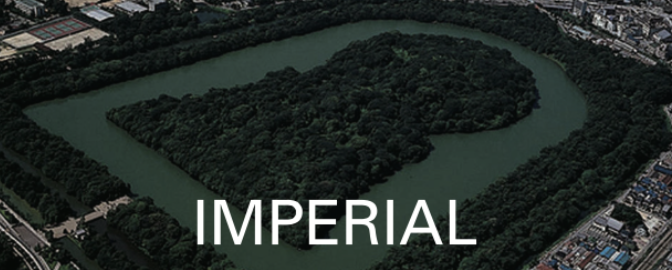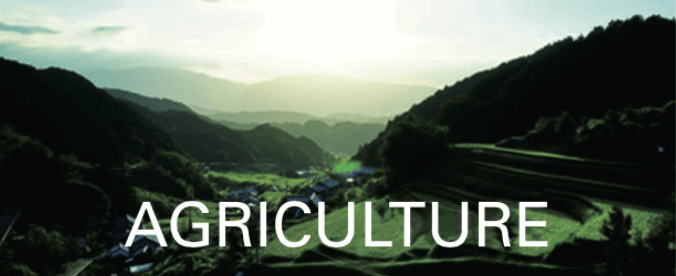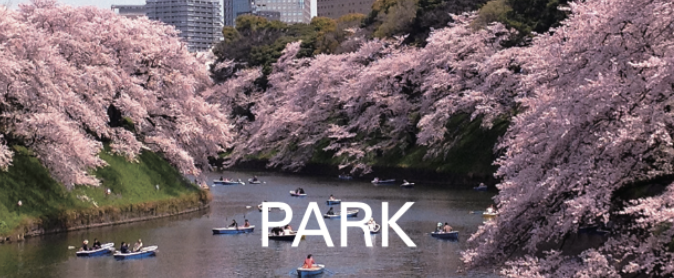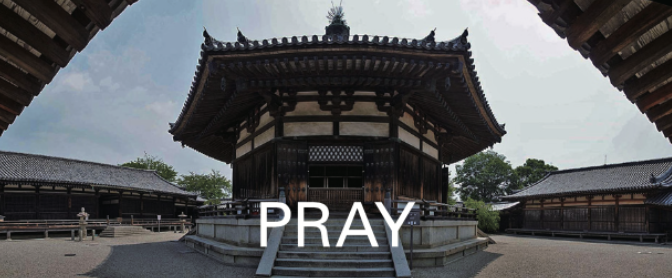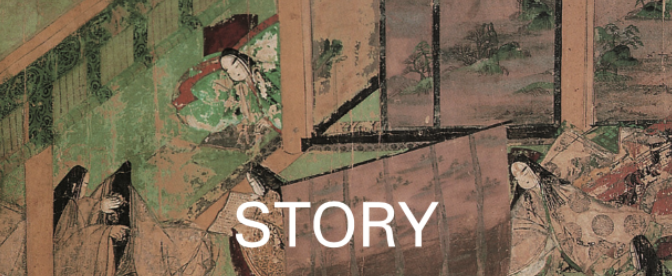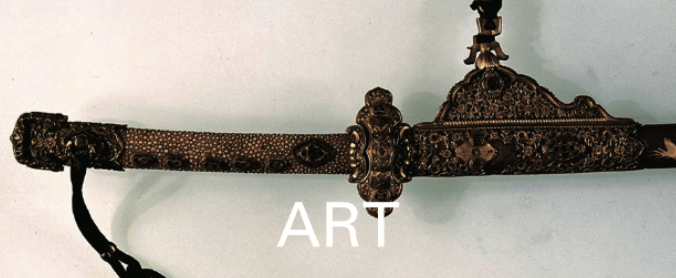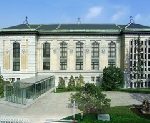
This library specializes in children’s books, with about 400,000 books, including those for children in Japan and overseas. It was established in 2000 as the Children’s Book Department of the National Diet Library. The Brick Building was built as the Imperial Library in 1906, was renovated and expanded, and its interior and exterior designs have a valuable architectural heritage. It conveys the remnant of culture and history at that time.
The Imperial Library and the Imperial Museum (present, Tokyo National Museum) used to be combined, located close to one another in Ueno, Tokyo. The library and the museum have the same origin, as a lighthouse of knowledge.

This museum currently holds approximately 9,800 works of art which were inherited from the imperial family and the relics of Empress Kojyun (1903-2000) and the gifts from the imperial family.
This work is a six-panel screen created as a pair and was dedicated to Mori Motonori. The work in the right wing is a very famous painting by Kanou Eitoku (1543-1590), the great master of the artist’s society in the Momoyama period, which was certified by Kanou Tanyu (1602-1674).
The figure of the majestic lion that stalks between the rocks is drawn by a very powerful writing method, and while it is a simple design, its power and courage are the style of Eitoku’s own work.
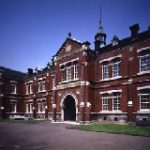
This Former Headquarters of the Imperial Guards is a classic example of Western-style brick construction in the Meiji period (1868 – 1912), which worked on the revision of the unequal treaties with the Western powers.
It is also an important building as a remnant of public architecture of the Meiji period. This building was designated as an important cultural property. Its Gothic style was designed by Tamura Yasushi (1878-1942), an army engineer. It has an octagonal tower at the entrance in the center that overhangs both wings.
This building was saved and restored in 1973. : Crafts Gallery, The National Museum of Modern Art, Tokyo was here. It is moving to Kanazawa City, Ishikawa Prefecture in October 2020 after ceasing operation in Tokyo on February 28, 2020. The public opening of the Former Headquarters of the Imperial Guards is under consideration, including restoration.
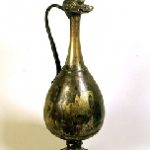
This gallery permanently exhibits masterpieces dedicated to the Imperial family from Horyuji Temple Nara in 1878. These treasures are the perfect match for the treasures of Shoso-in: the treasure house of the Imperial Household Agency, in the collection of ancient art. And these treasures include many items in the 7th century, but the treasures of Shoso-in are mainly from the next generation, the 8th century.
There is the National treasure Dragon-head pitcher, in Gold and silver plated bronze. The dragon’s head is a spout, the thin dragon’s body is the handle, the dragon’s upper jaw is the lid, and the dragon’s eyes are fitted with pale green glass. On the thinly made body, two pairs of Pegasus are finely engraved and gold plated to stand out. Combining the traditional motifs in the east, the Dragon, and those in the west, Pegasus, the shape and pattern are powerful and lively.

Nanko Rest House is in the Outer Gardens of the Imperial Palace, which sells souvenirs of beautiful scenes in various parts of Japan. The Outer Gardens of the Imperial Palace is the National Gardens and the representative park of Japan. There is a large lawn, studded with black pines, a popular variety along the Japanese coast. There is also the outer moat of the Edojo castle and historical buildings of the castle gate from the Edo period (1603-1868). The landscape of early modern and modern are harmonized here. These gardens were part of the Edojo castle during the Tokugawa Shogunate and were grounds and Stables during in the Edo period. These gardens used to be the site of the shallow Hibiya creek at the beginning of the 17th century. The Tokugawa Shogun reclaimed the land and the feudal lords near the Shogun built the houses. After the capital moved to Tokyo from Kyoto, the Edo castle became the Imperial Palace of the Emperor. This site later became Koshitu Enchi, the garden of Emperor family. Uchibori Street (the road of triumphal return) passes the Outer Gardens of the Imperial Palace. Gyouko Road (the Emperor’s outgoing road), after crossing the Uchibori Street, reaches Tokyo Station. This road was built as the reconstruction work after the great Kanto earthquake (1923).
